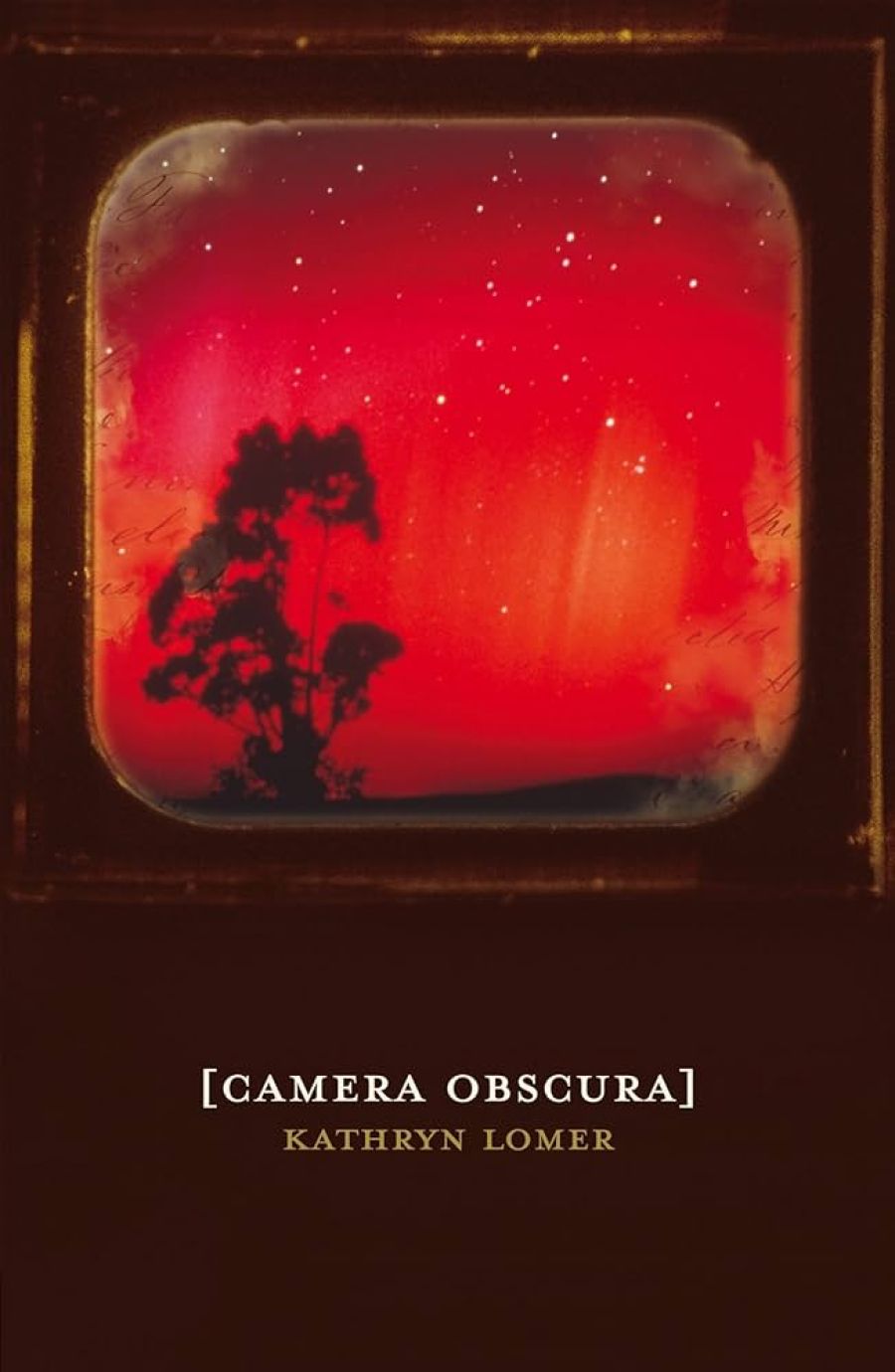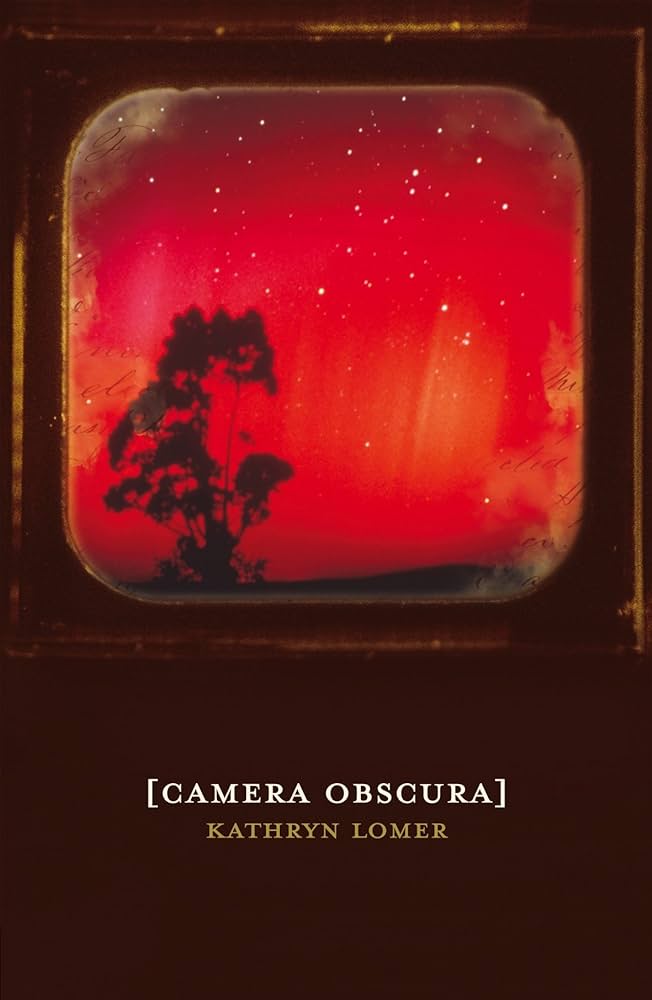
- Free Article: No
- Contents Category: Short Stories
- Review Article: Yes
- Article Title: Camera Obscura
- Online Only: No
- Custom Highlight Text:
Kathryn Lomer’s collection of short stories is ‘show, don’t tell’ storytelling with an emphasis on atmosphere instead of rapid plot movement. The best stories don’t have twists but end with a shift in perspective, a small victory or a solemn realisation. The book’s title is fitting: like the pinhole camera used by artists to isolate a single scene, Lomer’s stories are narrow in both scope and perspective. The stories are imagistic, even cinematic. Descriptions of light feature constantly: sunlight is triangled, louvred; fairy lights hide in vines, candles among food. Answering machines blink red in the dark.
- Book 1 Title: Camera Obscura
- Book 1 Biblio: UQP, $24.95 pb, 252 pp
- Book 1 Cover Small (400 x 600):

- Book 1 Cover (800 x 1200):

Nearly all of the stories feature a young woman as protagonist. Many are located in suburban Australia, or more precisely, in the mind of a person in suburbia; several are simply inner monologues. In a number of stories, the protagonist is displaced in a foreign country: these read like a travel diary of sorts, with tales set in Italy, Greece, France and the Czech Republic. ‘Sojourn’, about a road-trip through the French countryside in a Land Rover that breaks down, is a vivid depiction of the frustrations, as well as the rewards, of travel. A story set in Japan features Japanese protagonists rather than the familiar Western woman, but it feels less authentic, more romanticised. ‘Emerald Princess’, about a Japanese soldier returning to Tasmania in his eighties, is more successful.
In both the penultimate and final stories, the protagonist is physically isolated. In ‘Poem of the Sea’, a bereaved woman removes herself to a shack on a remote coastline. In ‘Here Be Dragons’, the protagonist takes her husband and young son back to the family farm. Both stories involve a tentative connection with the land and others in the area. In this way, these stories are representative of the collection as a whole: the lone self seeking tiny but meaningful connections with those around her.


Comments powered by CComment